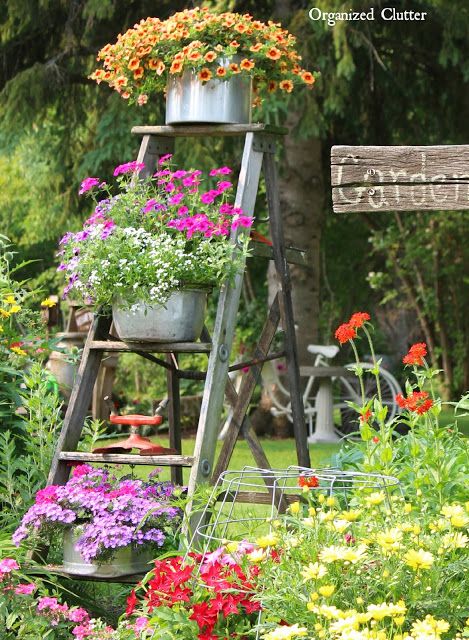Outdoor container gardening ideas with begonias offer a beautiful and versatile way to add color and life to your outdoor space. Begonias are a popular choice for container gardening due to their vibrant blooms and ease of care. Whether you’re a seasoned gardener or just starting out, incorporating begonias into your outdoor containers can elevate the look of your garden.
When it comes to container gardening with begonias, there are many benefits to consider. These versatile plants are perfect for adding pops of color to your outdoor space, whether you have a small balcony or a spacious backyard.
Begonias also thrive in containers, making them an ideal choice for those who may not have access to a traditional garden plot. Plus, with the wide variety of begonia species available, you can mix and match different colors and textures to create a unique and eye-catching display.
To get started with outdoor container gardening using begonias, it’s essential to choose the right containers that provide adequate drainage and room for root growth. Additionally, selecting the perfect location for your begonia containers is crucial for ensuring they receive the right amount of sunlight and protection from harsh weather conditions. By following these key steps and implementing creative design ideas, you can enjoy the beauty of begonias in your outdoor container gardens throughout the growing season.
Benefits of Growing Begonias in Outdoor Containers
One of the key advantages of growing begonias in outdoor containers is the versatility it offers for gardeners. Begonias come in a wide range of colors, sizes, and textures, making them a perfect choice for adding visual interest to any outdoor space. Whether you prefer bold and vibrant blooms or delicate cascading foliage, there is a begonia variety that will suit your taste and style.
Another benefit of growing begonias in outdoor containers is the ability to control their environment more easily. When planted in containers, begonias can be moved around to different locations based on their sunlight and shade preferences, as well as protection from harsh weather conditions. This flexibility allows you to create the ideal growing environment for your begonias, resulting in healthier plants and more abundant blooms.
Additionally, cultivating begonias in outdoor containers can help save space in your garden or yard. If you have limited planting areas or want to add a pop of color to specific areas like patios, balconies, or porches, container gardening with begonias is an excellent solution. By strategically placing containers filled with these gorgeous plants, you can maximize your outdoor space and create stunning focal points throughout your landscape.
- Increased versatility for gardeners
- Control over environment
- Space-saving solution
Choosing the Right Containers for Begonias
When it comes to outdoor container gardening ideas with begonias, choosing the right containers is crucial for the success of your garden. Begonias thrive in well-draining soil, so selecting containers with adequate drainage holes at the bottom is essential. Opt for pots made of breathable materials like terracotta or plastic rather than metal, which can heat up quickly in the sun and harm the roots of your plants.
The size of the container is also important when growing begonias outdoors. Begonias prefer slightly crowded conditions, so choose a container that is just slightly larger than the root ball of your plant. This will help promote healthy growth and blooming throughout the season. Additionally, consider the weight of the container once filled with soil and water – you may want to place heavier containers on stable surfaces to prevent tipping over during strong winds.
For a more creative approach to outdoor container gardening with begonias, think beyond traditional pots and consider using hanging baskets or decorative planters. Hanging baskets can add vertical interest to your garden space while allowing begonia vines to cascade beautifully over the edges.
Decorative planters come in various shapes and sizes, adding visual appeal to your outdoor space while providing a unique home for your begonias. Ultimately, choosing containers that suit both your aesthetic preferences and the needs of your begonias will lead to a successful and beautiful outdoor container garden display.
Selecting the Perfect Location for Begonia Containers
When it comes to outdoor container gardening ideas with begonias, selecting the perfect location for your begonia containers is crucial for their growth and development. Begonias thrive in locations that receive partial shade to filtered sunlight. They do not do well in direct, intense sunlight as it can scorch their delicate leaves. Look for spots in your outdoor space that receive morning sun and afternoon shade, or areas under taller trees where the light is dappled.
Consider Microclimates
It’s also important to consider the microclimates within your yard or balcony when deciding on a location for your begonia containers. Some areas may be warmer or cooler than others due to factors such as nearby structures, bodies of water, or slopes. Make sure to place your begonia containers in areas with even temperatures throughout the day to prevent stress on the plants.
Avoid Locations Prone to Strong Winds
Begonias have delicate stems and leaves that can easily be damaged by strong winds. To protect your begonia containers from wind damage, avoid placing them in exposed locations where gusts are common. Instead, look for sheltered spots near walls, fences, or other structures that can provide some protection from strong winds. By carefully selecting the perfect location for your begonia containers, you can ensure that they thrive and bring beauty to your outdoor space all season long.
Best Soil Mix for Begonias in Outdoor Containers
When it comes to outdoor container gardening ideas with begonias, choosing the right soil mix is crucial for the health and vitality of your plants. Begonias thrive in well-draining soil that provides them with the necessary nutrients to flourish. A good soil mix for begonias in outdoor containers should be light, airy, and rich in organic matter.
Organic Matter
Incorporating organic matter such as compost or peat moss into your soil mix can help improve its overall structure and water retention capabilities. Begonias are sensitive to waterlogged conditions, so a well-draining soil mix with ample organic matter can prevent root rot and other moisture-related issues.
Perlite or Sand
Adding perlite or sand to your soil mix can also enhance drainage and aeration, which are essential for the healthy growth of begonias. These components will prevent the soil from becoming compacted over time, allowing the roots to breathe and access nutrients more efficiently.
pH Balance
It is important to ensure that the pH balance of your soil mix is suitable for begonias. Most begonias prefer slightly acidic to neutral soil conditions. You can test the pH levels of your soil mix and make necessary adjustments by adding lime or sulfur if needed. By providing your begonias with a balanced pH environment, you can promote optimal growth and blooming throughout the growing season.
Tips for Watering and Fertilizing Begonias in Containers
Begonias are stunning flowering plants that can thrive in outdoor container gardens, adding a pop of color and interest to any space. When it comes to caring for begonias in containers, proper watering and fertilizing are essential for ensuring healthy growth and vibrant blooms.
Watering begonias in containers can be a delicate balancing act. These plants prefer consistently moist soil but do not like to sit in waterlogged conditions. It is essential to check the moisture level of the soil regularly by inserting your finger into the top inch of the soil.
If it feels dry to the touch, it’s time to water your begonias. Be sure to water thoroughly until you see the excess water draining out of the bottom of the container.
In terms of fertilizing begonias in outdoor containers, a balanced liquid fertilizer diluted to half strength can be applied every two weeks during the growing season. This will provide your begonias with the necessary nutrients for healthy foliage and abundant blooms. Remember not to over-fertilize, as this can result in excessive leaf growth at the expense of flowers. With proper watering and fertilizing techniques, you can enjoy beautiful begonias thriving in your outdoor container garden all season long.
| Watering Begonias | Fertilizing Begonias |
|---|---|
| Check soil moisture regularly | Use half-strength balanced liquid fertilizer |
| Water thoroughly until drainage | Apply every two weeks during growing season |
Creative Design Ideas for Arranging Begonia Containers
Container gardening with begonias offers a versatile and colorful way to brighten up any outdoor space. When it comes to arranging begonia containers in your garden, the possibilities are endless. One creative design idea is to mix different varieties of begonias in a single container to create a vibrant and dynamic display.
For example, pairing cascading begonias with upright varieties can add height and visual interest to your arrangement. Additionally, combining different colors of begonias in a single container can create a stunning color contrast that will catch the eye.
Another design idea for arranging begonia containers is to play with different container shapes and sizes. Mixing large containers with smaller ones can add depth and dimension to your outdoor space. Consider using hanging baskets or wall-mounted planters for a vertical element in your begonia display. Grouping containers of varying heights together can also create a visually appealing layered effect.
When arranging begonia containers, don’t forget about the importance of texture. Mixing different foliage shapes and sizes can add an extra layer of interest to your garden design. Pairing begonias with complementary plants like ferns or ivy can create a lush and full look that will make your outdoor space feel like a secret garden oasis.
| Aspect | Recommendation |
|---|---|
| Variety Mix | Combine different varieties of begonias in one container for visual interest. |
| Container Sizes | Experiment with mixing large and small containers for added dimension. |
| Texture Combination | Incorporate plants with varied foliage shapes and sizes to enhance the overall look. |
Maintenance and Care for Begonias in Outdoor Containers
When it comes to maintaining and caring for begonias in outdoor containers, there are a few key factors to keep in mind to ensure your plants thrive. Here are some essential tips to help you provide the best care for your begonias:
- Watering: Begonias in containers should be watered regularly, but be careful not to overwater as this can lead to root rot. It’s important to allow the soil to dry out slightly between waterings, especially during the cooler months.
- Fertilizing: Use a balanced liquid fertilizer specifically formulated for blooming plants to provide nutrients that will promote healthy growth and vibrant blooms. Fertilize your begonias every 2-4 weeks during the growing season, following the manufacturer’s instructions.
- Pruning: Regularly remove dead or faded flowers to encourage new blooms and maintain a tidy appearance. Additionally, prune any leggy or overgrown stems to promote bushier growth.
To ensure your begonias continue to flourish in outdoor containers, it’s important to monitor for signs of pests and diseases. Keep an eye out for common issues such as powdery mildew, gray mold, aphids, or spider mites. If you notice any problems, promptly address them with appropriate treatments such as fungicides or insecticidal soaps.
In addition to regular maintenance tasks, consider periodically refreshing the soil in your begonia containers. Over time, soil can become compacted and depleted of nutrients. Every 1-2 years, replace old potting mix with fresh soil or mix in organic matter like compost to replenish nutrients and improve drainage. By following these maintenance and care tips, you can enjoy beautiful and healthy begonias thriving in your outdoor container garden throughout the growing season.
How to Overwinter Begonias in Containers
Overwintering begonias in containers is a crucial step to ensure the survival of these beautiful plants through the colder months. Begonias are generally considered tropical plants and are not tolerant of frost or freezing temperatures. By taking proper precautions, you can successfully overwinter your begonias and enjoy their vibrant blooms year after year.
One method to overwinter begonias in containers is to bring them indoors before the first frost hits. Find a cool, bright location inside your home where they can receive adequate sunlight. Avoid placing them near drafty windows or heaters as extreme temperature fluctuations can stress the plants. Keep the soil lightly moist during this time, but be careful not to overwater as begonias are prone to root rot.
Another option for overwintering begonias in containers is to store them in a dormant state. As temperatures drop, cut back on watering and allow the foliage to naturally die back. Once the foliage has withered, carefully dig up the tubers or rhizomes (depending on the type of begonia) from the container.
Clean off any remaining soil and allow them to air dry for a few days. Place the tubers or rhizomes in a paper bag filled with peat moss or vermiculite and store them in a cool, dark location until it’s time to replant in the spring. This method allows your begonias to rest during the winter months and rejuvenate for the growing season ahead.
By following these tips on how to overwinter begonias in containers, you can ensure that your precious plants survive the winter months and thrive when spring arrives. With proper care and attention, you’ll be able to enjoy their colorful blooms year after year, adding beauty and charm to your outdoor container garden design with begonias.
Conclusion
In conclusion, outdoor container gardening with begonias can truly elevate the beauty of your outdoor space. The versatility and vibrant colors of begonias make them a fantastic choice for any container garden. Whether you have a small balcony, a spacious patio, or a cozy corner in your backyard, begonias can thrive and brighten up the area with minimal effort.
By following the tips and guidelines outlined in this article, you can successfully grow begonias in outdoor containers and enjoy their beauty throughout the growing season. From choosing the right containers to selecting the perfect location, providing the best soil mix, proper watering and fertilizing, to creative design ideas for arranging your begonia containers – every step contributes to a successful container garden filled with these stunning flowers.
So, if you are looking to add color, texture, and visual interest to your outdoor space, consider incorporating begonias into your container garden. With the right care and attention, you can create a visually stunning display that will be the envy of all your neighbors. Embrace the joy of outdoor container gardening with begonias and watch as your space transforms into an oasis of beauty and charm.
Frequently Asked Questions
What Can I Plant in a Container With Begonias?
Begonias can be paired with a variety of plants in containers to create beautiful displays. Some great options include impatiens, caladiums, ivy, ferns, and even some herbs like parsley or basil. The key is to choose plants that have similar light and water requirements to ensure they thrive together.
What Looks Good With Begonia?
Begonias are versatile plants that can complement a wide range of other flowers and foliage. They look especially good when paired with plants that have contrasting colors, textures, and heights.
For example, begonias can be paired with coleus for a vibrant contrast in color and leaf shape. Additionally, mixing begonias with pentas or lobelia can create a visually appealing floral arrangement.
Do Begonias Like Sun or Shade?
Begonias generally prefer partial shade to thrive as they do not tolerate direct sunlight very well. While some varieties may tolerate more sun than others, most begonias prefer bright indirect light or filtered sunlight throughout the day.
Placing begonias in full shade may cause them to become leggy or fail to bloom properly. It’s important to find the right balance of light exposure for your specific type of begonia to ensure its health and vitality in your garden or container planting setup.

Welcome to my gardening blog! I am passionate about plants and enjoy sharing my knowledge and experiences with others. In this blog, I will write about everything related to gardening, from tips on how to get started to updates on my own garden projects.





